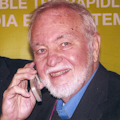IPTV is a service provided by some carriers in a business model similar to that used by the cable TV industry. The customer signs up for the service, gets the set-top box (STB), and receives TV programming as well as video on demand (VOD) similar to that delivered by a cable company. Then the consumer watches programming on a TV set.
The big difference between IPTV and cable, though, is that cable was designed as a one-way broadcast system. All of the available programming goes out from a central head end over a hybrid-fiber-cable (HFC) system where fiber runs to the neighborhoods. From there, the offerings are sent via coax cable (usually RG-6/U or equivalent) to the home.
At each neighborhood node where the fiber terminates, the coax drops can number from a few hundred to over a thousand, meaning that lots of neighbors share the bandwidth. It doesnâ??t matter with TV, but for Internet access, speed must be shared. An STB with a tuner selects the desired channel with input from the customerâ??s remote control. A separate cable modem is used to connect to the PC.
While cable is essentially a one-way system, there are so-called reverse channels that allow the STB box to talk to the cable head end. The cable company can block any channels that the customer doesnâ??t pay for.
Cable TV systems use a sophisticated system called Data Over Cable Service Interface Specification (DOCSIS), developed by CableLabs. It divides the bandwidth of the fiber and cable into multiple 6-MHz wide channels. These channels were a perfect fit for the original analog TV. Over time, they have been used to carry digital TV.
The bandwidth of those cables has also increased over the years. Today, most systems offer a full 860 MHz or 1 GHz of bandwidth. With the advent of efficient video compression and modulation techniques like multilevel quadrature amplitude modulation (QAM), cable companies can cram two or more digital TV signals into a single 6-MHz channel. And, these 6-MHz channels make great Internet access spectrum with very high speeds.
Most cable companies also use the DOCSIS system to offer Voice over Internet Protocol (VoIP) at attractive rates. Thus, cable-TV companies are the leaders in the triple-play services market.
DOCSIS 3.0 uses 256 QAM and bonds four 6-MHz channels together, so maximum speed is 152 Mbits/s downstream and 108 Mbits/s upstream. Few providers have yet to adopt 3.0, but Comcast has installed it and now offers data rates in some parts of the U.S. to compete with the current speed leader, Verizonâ??s FiOS.
Unlike cable, IPTV uses the Internet and IP, and as such is inherently a two-way system. The video is encrypted, then compressed and put into IP packets. After that, the packets are sent via fiber and eventually by an Ethernet connection to the TV set.
Because the system is two-way, the customer can easily talk back to the provider in several ways. This is supposedly one of the great benefits of IPTV over cable, two-way transmission. While it has yet to be fully exploited or proven as a â??majorâ? advantage, this interactivity is nonetheless said to be the key feature of IPTV.
IPTV is strictly baseband, while cable uses broadband modulation methods. The prevailing video-compression method is the more efficient MPEG-4 (H.264), although older systems still use MPEG-2.
Since the future is certainly fiber, there are several efforts to extend fiber to the home (FTTH). AT&Tâ??s U-verse could be slowed or some markets unavailable unless they develop a full FTTH solution. With both Ethernet and Gigabit passive optical networks (PONs) proven and widely used at this point, they are certainly a favorable low-cost solution. In the future, Ethernet PON (EPON) and Gigabit PON (GPON) will likely be the best options.
An FTTH solution has even been developed for the cable industry. Called RF over Glass (RFoG), it uses the same RF/modulation schemes now used in the current hybrid fiber coax network. The fiber runs directly to the home rather than a local node. The consumerâ??s STB does the optical-to-electrical conversion normally done at the HFC neighborhood node. While it has yet to be adopted, it provides a relatively simple and inexpensive way for cable operators to upgrade in the future as dictated by competition and customer demand.
About the Author

Louis E. Frenzel
Click here to find more of Lou's articles on Electronic Design.